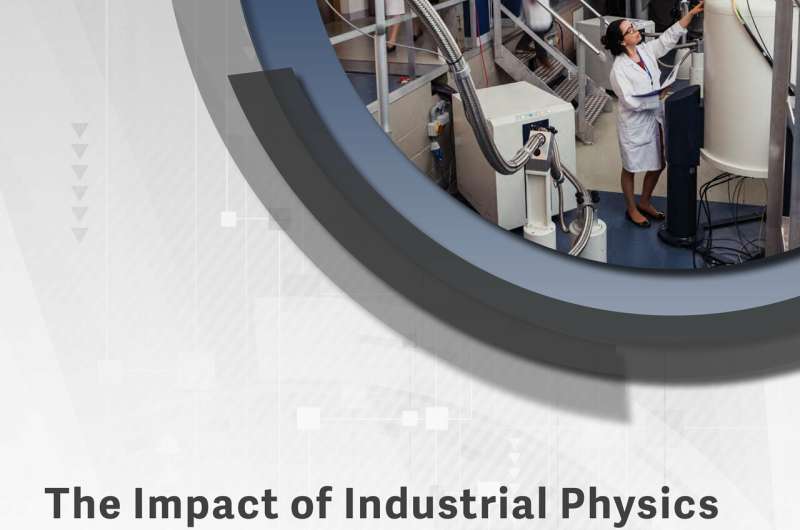New report on industrial physics and its role in the US economy

Industrial physics plays a significant role in driving the U.S. economy, according to a new report by the American Physical Society, which will be described this week at the 2019 APS March Meeting in Boston.
The report, "The Impact of Industrial Physics on the U.S. Economy," found that industrial physics contributed an estimated $2.3 trillion in 2016, which was 12.6 percent of the gross domestic product (GDP).
What Exactly is Industrial Physics?
"Industrial physics is the application of physics knowledge and principles to the design and manufacturing of products and services," said Steven Lambert, APS Industrial Physics Program Manager. "The success of modern technology is built upon a foundation of innovations in physics. Sometimes that's done directly or indirectly, but industrial physicists are the catalysts for making this happen."
Industrial physics contributes to the U.S. economy in several key ways, according to the report. This includes not only physicists with degrees who are working in industry as researchers, product designers, managers, research directors and entrepreneurs, but also engineers, chemists, materials scientists, technicians and other scientists and technologists who use experimental or theoretical physical principles within their professions.
Another way industrial physics contributes is through the use of fundamental physical principles—the laws governing the electronic, nuclear, mechanical, electrical, magnetic, acoustic, heat and radiation behavior of physical substances—to conceptualize, design and manufacture physical products and systems, including understanding their use and impact.
"We expected to find that industrial physics is important to the U.S. economy, but we were surprised at the size of the contribution: 12.6 percent of the U.S. GDP and 6 percent of direct employment," said John Rumble, of R&R Data Services and a member of the APS Industrial Physics Advisory Board. "This reflects the increasingly technological basis of our economy and is one reason that the U.S. continues to be the leading economy in the world."
Among the report's other key findings about the industry's impact on the U.S. economy:
- 11.5 million people were employed in physics-based industries in 2016.
- Approximately 70,000 degreed physicists joined industry from 2003-2016, more than 58 percent of the total number of U.S. physics graduates.
- U.S. exports by physics-based sectors accounted for about $1.1 trillion in 2016.
- U.S. physics-based companies invested $150 billion in internal R&D in 2015.
- More than 340,000 physics patents were granted to U.S. companies from 2010-2016.
One highlight from the report: "Since the end of World War II, physics discoveries of the 20th century have been transformed by industrial physicists into incredible products and services. Examples include consumer electronics, personal computers, cell phones, GPS, MRI scanners, digital everything, and the Information Revolution that makes life today virtually unrecognizable to someone who lived 70 years ago. The flow of physics into industry is neither stopping, nor even slowing down, as new disruptive products and services continue to emerge."
The report concludes that for industrial physics to continue to thrive, it needs support from the entire physics community—industry, academia, government, and physics societies—to continue to support industrial physics so that it can continue to thrive. It cautions that the 21st-century industry will need new physics and a better understanding of our physical world, a goal that requires the U.S. to maintain its leadership in physics R&D.
"U.S. industry needs the creativity and knowledge of industrial physicists to continue the pace of technology development that we've seen during the past 50 years," said Bob Doering of Texas Instruments and chair of the APS Industrial Physics Advisory Board. "Physics training fosters the creativity and technical skills that are essential for this pursuit."
More information: The 2019 APS March Meeting presentation "The Economic Impact of Industrial Physics on the U.S. Economy: What value we physicists bring to economic activity," by John Rumble, will take place Thursday, March 7, at 3:42 p.m. in room 205A of the Boston Convention and Exhibition Center. Abstract: meetings.aps.org/Meeting/MAR19/Session/V34.3
Provided by American Physical Society


















